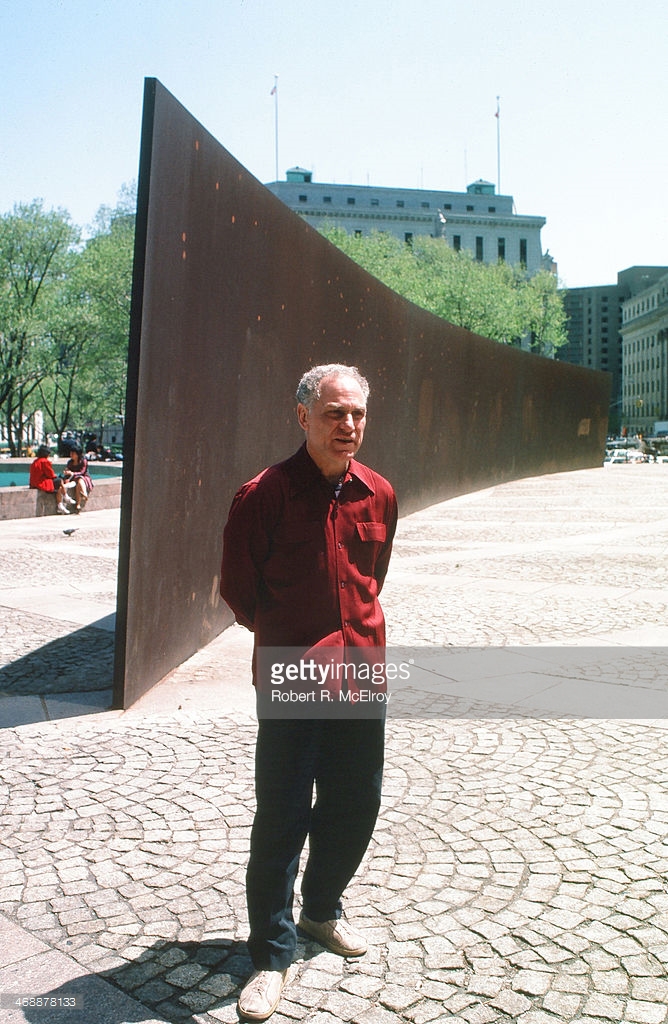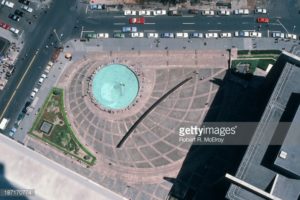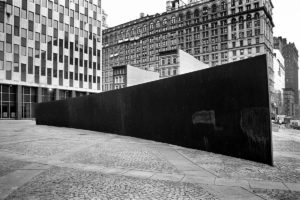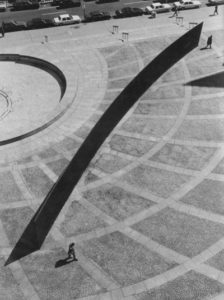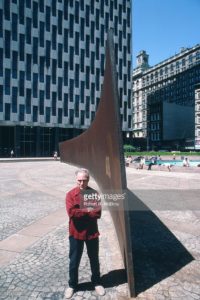Richard Serra was commissioned and built a site specific public sculpture in the federal plaza of Lower Manhattan, New York. An eight year battle between the civil servants that worked in the location of the sculpture and the conceptual aspirations of Serra finally came to an end with the removal of the sculpture in 1989. Serra even fought with a 30 million dollar lawsuit towards the GSA in efforts to try and keep the sculpture site specific which he also lost in court.
The physical nature of this sculpture is difficult to deny. To be frank, Tilted Arc is extremely intimidating. The site-specificity of the piece is extremely important to the reading of Tilted Arc in this context. Here in a bastion of commercial and consumer power (The Javits building coincidentally houses the Court of International Trade, with government offices in the building across the plaza) lies an anti-monument to these same values. True, many other Federal Plazas throughout the US have commissioned major sculptures from artists such as Oldenburg, Segal, Calder, Noguchi, di Suvero and many others. In this instance, however, the artistic hallmarks of conventional public sculpture are virtually nonexistent. Without these indicators, the average person cannot derive the meaning of the piece. This may explain the numerous complaints regarding Tilted Arc, from the fact that it restricts lines of sight and provides cover for muggers, to the bizarre accusation that a rat problem in the area was a result of the sculpture (Serra, Art in America 35). Serra’s work draws attention to the fact that this place is only superficially a “public” space, and without this sculpture the space makes no sense6. Serra seems to have intentionally negated the openness of the plaza, providing a physical expression of the division of power. The viewer is forced to respond to this because of the unavoidability of the structure. The arc angles toward the Federal Building, attesting to the division of those who hold power from those who enforce it. He wants us to examine these objects not as “Art” but elements of our urban fabric. Even with the similarity of form and materials Tilted Arc shares with the buildings that surround it, it is hopelessly rejected by the general public, like a donor organ in the body of a transplantee. Without acknowledgement of its value, it is fundamentally useless. (Havard Law)

